How Artificial Intelligence (AI) Going To Impact on Software Industry: Changing Quality Assurance
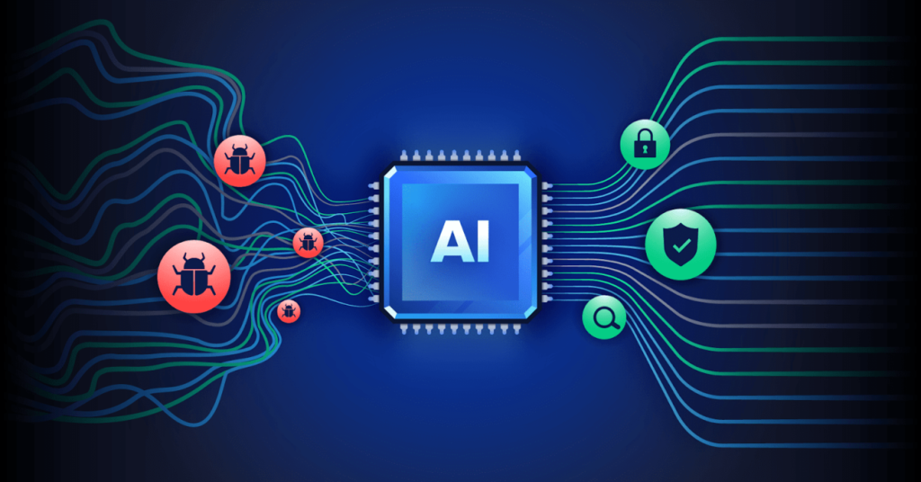
Artificial Intelligence
Software development is a rapidly changing industry. As a result, efforts have been made in the sector to boost efficiency, accelerate delivery time, and improve quality. Artificial Intelligence (AI) is integrated into several stages of the software development life cycle including software testing. However, its role in software testing has been revolutionary as it holds the potential to change everything about how applications are tested, verified, and validated. This Blog examines the depth of effects that can be caused by AI on software testing focusing on its benefits, problems, and prospects.
Benefits :
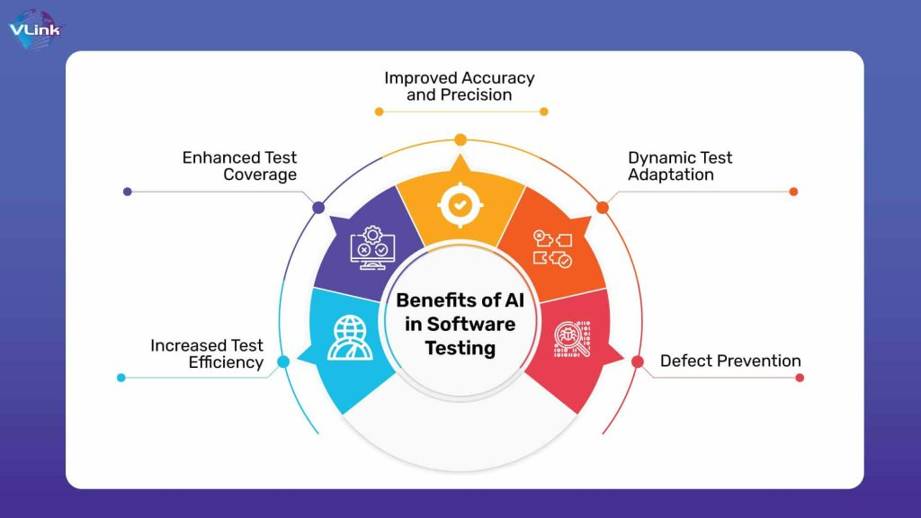
Benefits Of AI
1. Automated test case generation
Artificial Intelligence has contributed significantly to automating the test case generation for software testing. Traditionally test cases creation used to be a tedious and manual process where human testers had to predict possible situations. Nonetheless, this technology uses AI which analyses the application under test (AUT) among other requirements as well as its historical data with an aim of generating automatically generated test cases. It not only speeds up the evaluation process but also enhances coverage by detecting edge cases or scenarios that human testers would miss out on during testing.
In this case, machine learning algorithms are highly involved: they learn from the results of previous tests and find patterns in the code that can point to certain areas with a vulnerability or complexity. By creating an exhaustive set of test cases, AI allows testers to concentrate on more strategic parts of testing like exploratory testing and scenario-based testing which foster quality software development as well.
2. Intelligent Test Execution and Prioritization
The advantage of AI is its ability to predict the most likely test cases for failure on the basis of several factors that include prioritizing test cases due to code changes, risk analysis, and business priorities. In typical testing approaches, all tests are often run sequentially without considering their importance or relationship with recent code modifications. This is where AI comes into play: based on historical data by training itself, plus current conditions in the codebase. AI models can forecast probabilities of failure for individual test cases and thus run only those tests that are likely to fail.
The ability to predict means that artificial intelligence-based testing frameworks can efficiently conduct tests by prioritizing high-risk areas. This way, the role of AI is not just to quicken feedback but also to guarantee that major deficiencies are identified right at the initial stage of software development— thus curbing the cost and effort typically necessary for bug fixing and maintenance.
3. Better Defect Detection and Root Cause Analysis (RCA)
The early detection of faults in the production line before making software, therefore is highly essential in managing risks effectively and helps in providing quality products. AI testing tools are very good at doing detailed analysis on large sets of test data and detecting peculiarities – which could imply potential abnormalities that were not detected during previous stages of the development process. The tools are able to detect discrepancies or divergences between actual test results and anticipated outcomes; they do this by using machine learning models that observe such variations in a live mode with some abnormal behavior.
Furthermore, artificial intelligence allows a more profound investigation into what might have caused those defects – in other words, relating defects to specific code changes, environmental situations, or user actions. This feature speeds up the debugging process significantly while also ensuring that developers receive critical details on defect causatives; this means they will be able to come up with a targeted fix and improve the situation.
4. Testing and Performance Optimization
AI’s impact is considered to be huge covering from functional testing to performance testing or optimization. When it comes to performance testing, we usually want to simulate User Load & Stress conditions which help us understand how our application responds under a high load with respect to response time and scalability. Using AI-powered performance testing tools can model more complex behaviors of the users interacting with the system which helps in providing a realistic environment and effectively helps extract results.
A good example of how AI can be used to improve performance is by running periodic analyses on real-time metrics that help developers identify potential bottlenecks so they can preemptively optimize their applications for scalability and reliability. Lastly, this proactive approach is not only to make the user experience better but also helps a lot when we are working in a production environment where if something isn’t done right it can easily cause performance issues and downtime.
5. Self Healing Capability
Self Healing is basically an auto-healing mechanism that is offered by AI for different frameworks available in the market nowadays. When designing test scripts for UI testing, objects of the AUT are bound to locators to run the test scripts successfully. It is definite that the AUT will not stay the same over time. Testing tools with self-healing are now able to detect the changes and automatically update the new attributes in place of the old ones which ensures the designed test scripts are functional and results in less failure of the test scripts.
Let’s assume that the login button identifier is changed on the Login page from //a[@id=’login’] to //a[@id=’login-demo’]. When the self-healing is enabled, it will successfully locate the element with the new XPATH.
Some of the tools like Katalon Studio have inbuilt Self-healing mechanisms. The Self-healing mode is enabled by default for the project. We can go to Project > Settings > Self-Healing > Web UI to open the Self-healing window, or click on the Self-healing icon directly from the toolbar which will show an updated locator for the test run is saved temporarily, and we need to approve those changes to make it permanent.

Katalon Self-healing Insights
In Selenium Self-healing powered by Helenium which is an AI-based open-source library that improves the stability of Selenium-based test cases. It can be easily configured by just wrapping the Selenium driver with SelfHealingDriver. The below flow explains how helenium works when the locator ‘Id’ attribute value is changed from “button” to “green_button”.
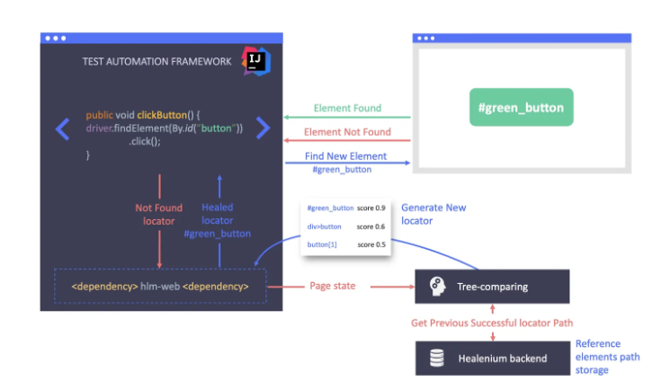
Helenium Model
6. Predictive Maintenance and Continuous Improvement
Next-level AI (beyond testing) is more about Analysis where it can track the data and find patterns, so these pattern predictions not only help in Testing but also for Predictive Maintenance as well as Continuous improvement. AI will predict issues regarding to application performance metrics, user feedback, and environmental events before they impact the end users.
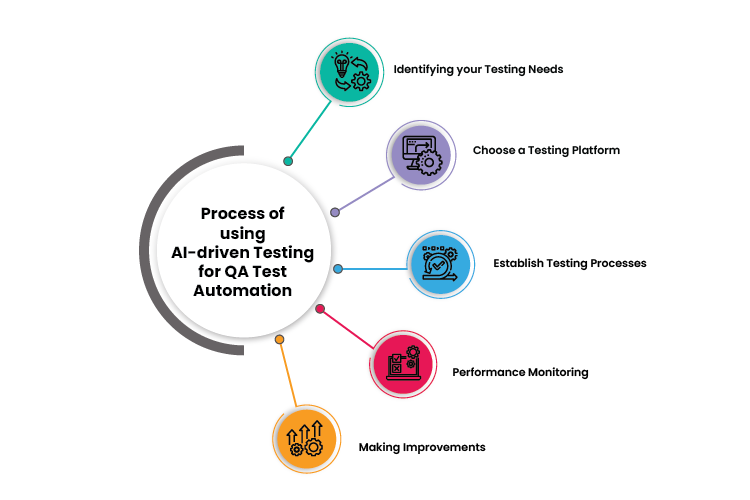
AI process
Challenges and Considerations
AI has the potential to greatly improve software testing best practices; however, it also introduces several challenges and factors that need to be taken into consideration. So the training data needed to train AI models is not always available in terms of quality and diversity. Similar to AI-powered testing, there are biases in training data, and the effectiveness of this approach may be limited by a duplicate detection rate (duplicates currently represent about 1% additional spend), b) ad-heavy pages programmed to fall into the acceptable range.
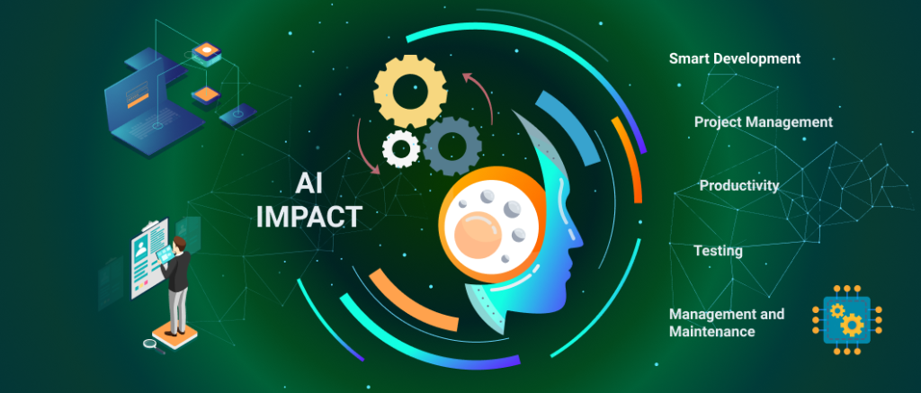
Impact
Also, building AI on top of your existing testing frameworks is a challenging task that needs professionals in machine learning, data science and software engineering. The teams also need to be trained and the AI that fits their testing needs as well as development processes should be picked up by organizations.
The Future of AI in Software Testing
AI in software testing can be forecasted that the prospect of AI in software testing will remain rather favorable and rejuvenating. That is why the improvements in the already existing subfields of AI like NLP, computer vision, and reinforcement learning will contribute to the further development of AI testing tools. These advancements will allow AI to perform more elaborate interactions, such as the ones associated with a more complicated interface, IoT, M2M, etc.

IOT & M2M
In addition, AI testing frameworks will progress to incorporate agile software development practices along with continuous integration/continuous delivery (CI/CD). AI will thus help organizations to improve their software testing approaches through automation of repetitive work, the optimization of test coverage, and the identification of defects during testing, hence will help enhance the time to market, and improve the software quality, as well as the end-user experience.
Conclusion :
To sum up, testing based on AI is a revolution in the sphere of software testing that opens great opportunities to make testing more effective, to improve the quality of the final product, and to create new successful experiments. Thus, despite the mentioned challenges, the benefits of using AI-powered testing tools are much greater. It can be said with certainty that as AI advances further in the future, its significance to software testing will expand, defining the future development of this field as well as strategies for testing software and its compliance with user requirements.

